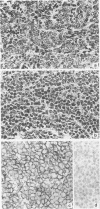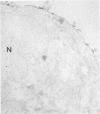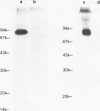Abstract
We have developed a mouse monoclonal antibody 5C11 (IgG2a) against cell surface antigen of Ewing's sarcoma (ES). 5C11 specifically reacted with ESs but not with other small round cell tumours in childhood, i.e. neuroblastomas, primitive neuroectodermal tumours (PNETs), rhabdomyosarcomas and malignant lymphomas. 5C11 did not react with any other tumours in children except for hepatoblastomas. No reactivity has been identified in normal tissues with the exception of fetal hepatocytes. Immunoelectron microscopically, 5C11 reactive antigen was located on cell membrane of ES cells. Biochemically, 5C11 immunoprecipitated a cell surface protein having molecular weight of 81,000 Da. 5C11 is the first antibody which can clearly distinguish ES from neurogenic tumours, especially from PNETs which were recently reported to have common features to ESs regarding chromosal abnormality and proto-oncogene expression but show evident differentiation into neurogenic direction. The results strongly indicate the usefulness of 5C11 not only for diagnostic purpose when no specific marker is available but also for studying the histogenesis of ES. In addition, no reactivity in normal tissue implies its potential application as a therapeutic reagent when the management of ES patients is still a great problem in clinical field.
Full text
PDF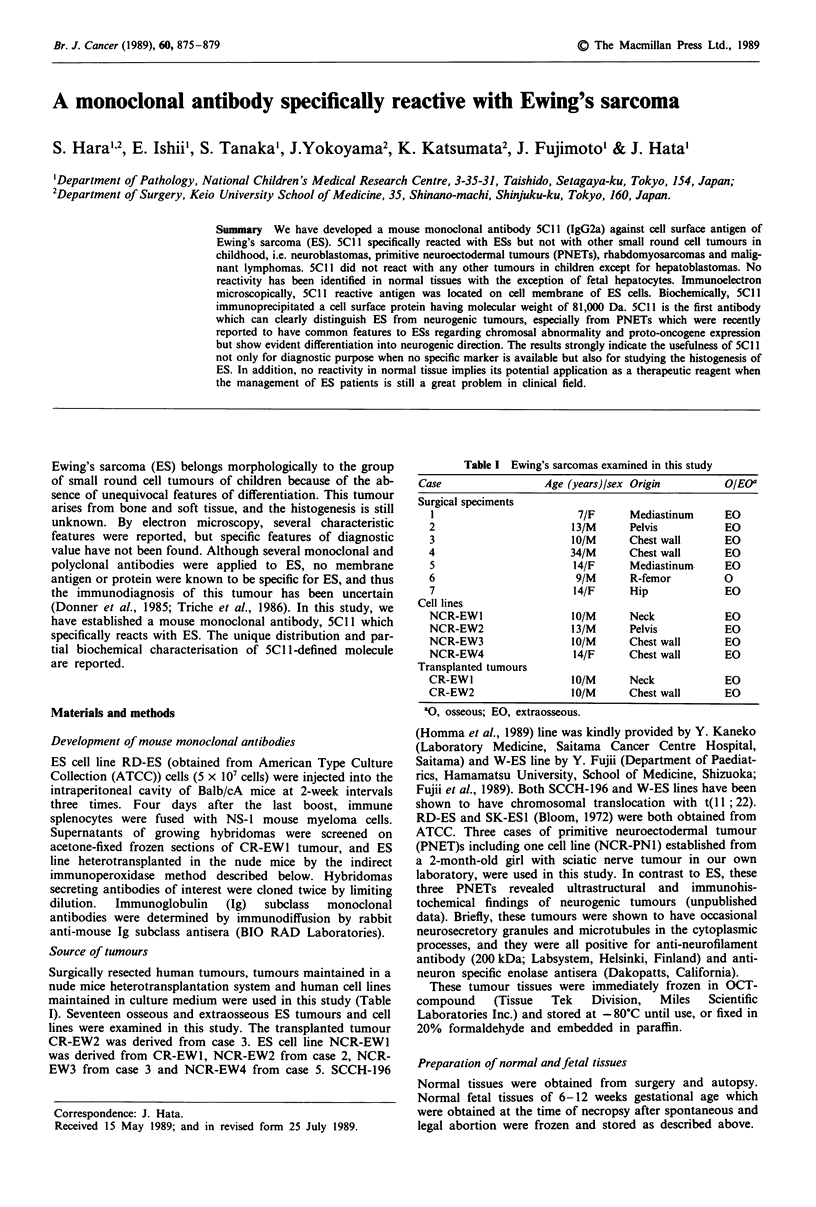
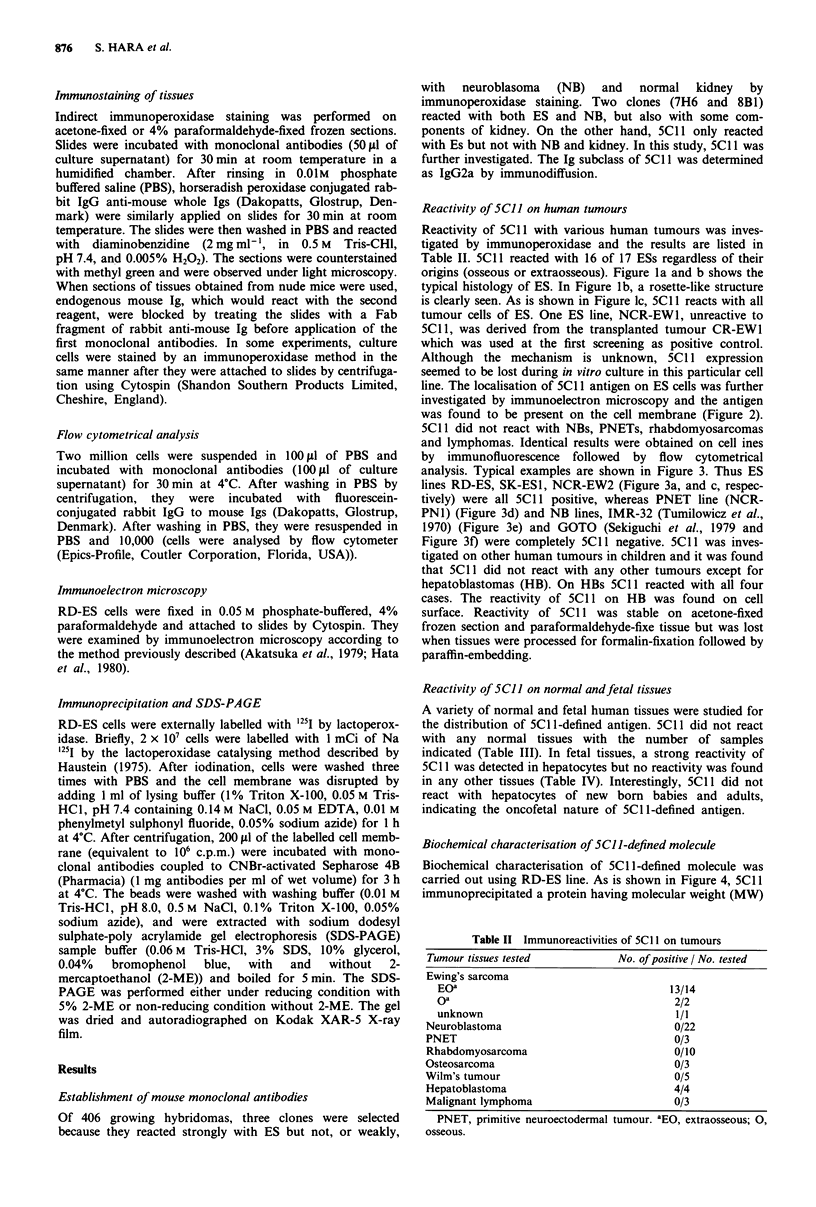
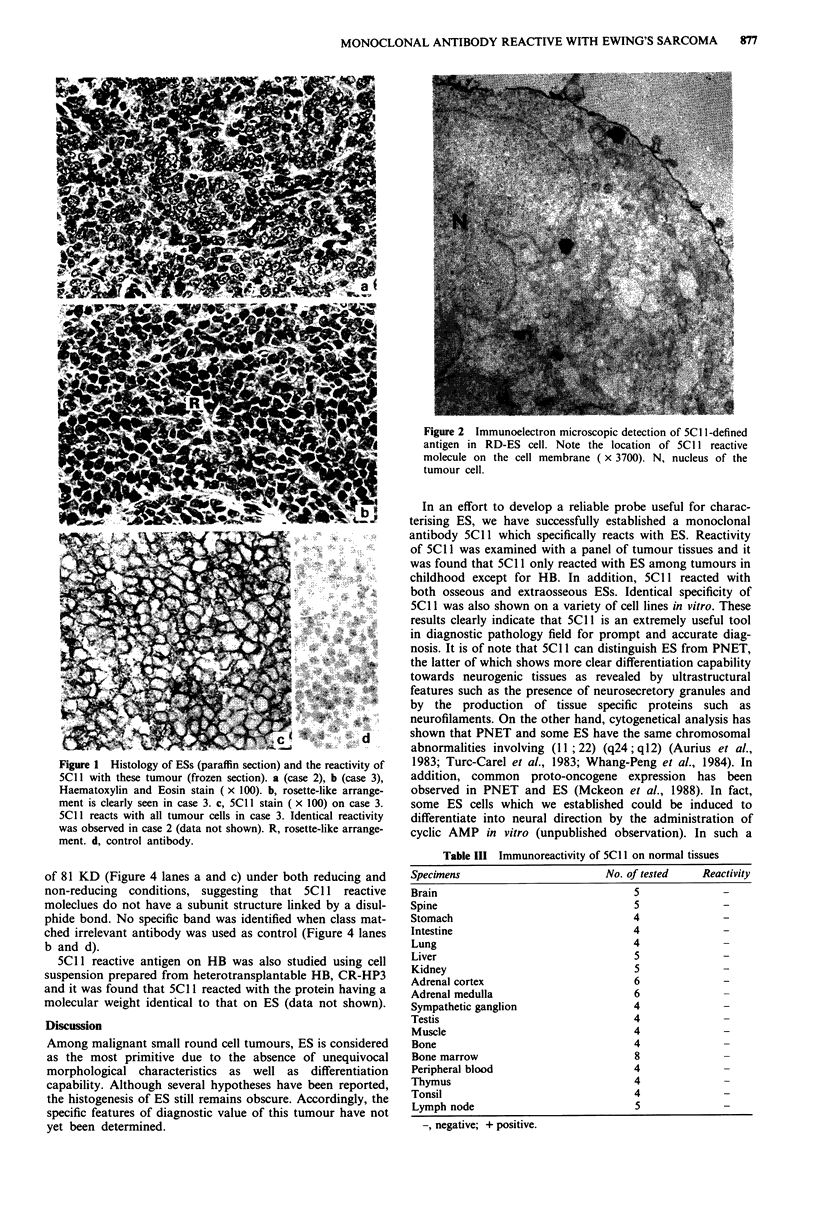

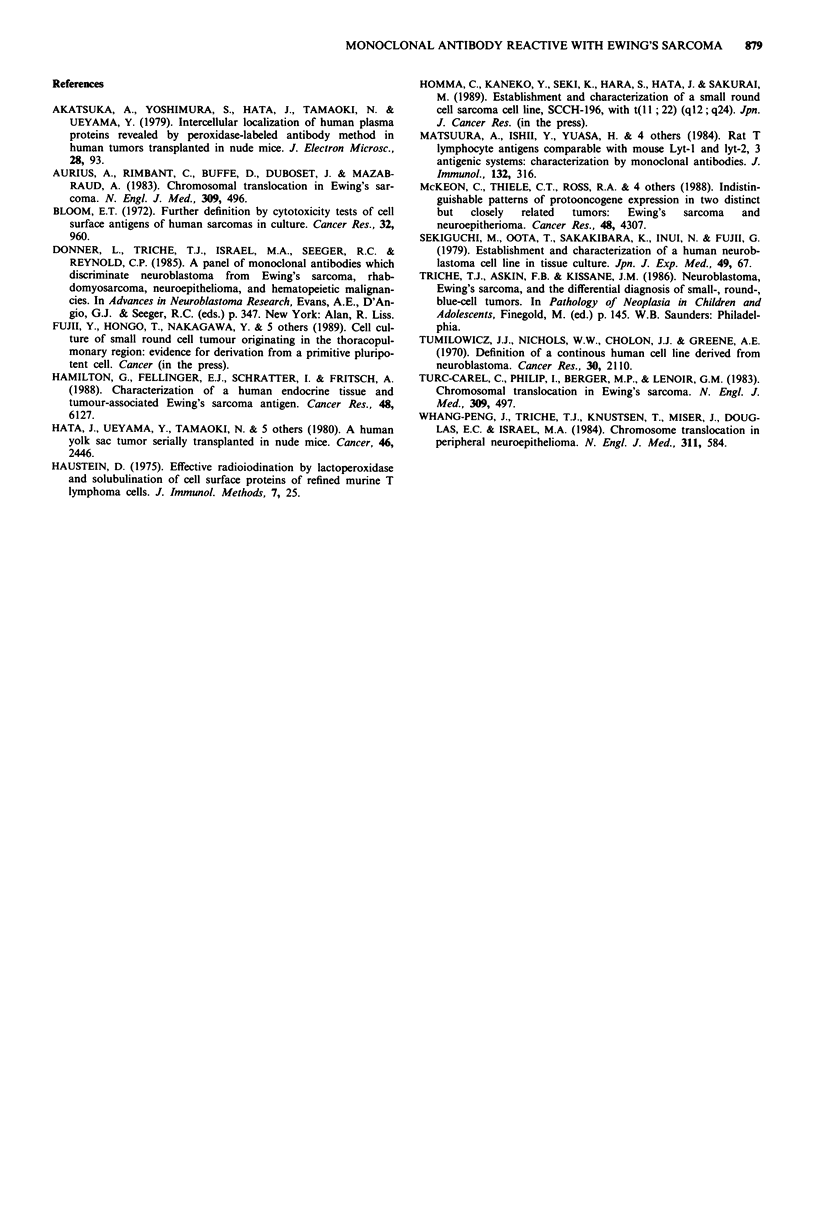
Images in this article
Selected References
These references are in PubMed. This may not be the complete list of references from this article.
- Akatsuka A., Yoshimura S., Hata J., Tamaoki N., Ueyama Y. Intracellular localization of human plasma proteins revealed by peroxidase-labeled antibody method in human tumors transplanted in nude mice. J Electron Microsc (Tokyo) 1979;28(2):93–99. [PubMed] [Google Scholar]
- Bloom E. T. Further definition by cytotoxicity tests of cell surface antigens of human sarcomas in culture. Cancer Res. 1972 May;32(5):960–967. [PubMed] [Google Scholar]
- Hamilton G., Fellinger E. J., Schratter I., Fritsch A. Characterization of a human endocrine tissue and tumor-associated Ewing's sarcoma antigen. Cancer Res. 1988 Nov 1;48(21):6127–6131. [PubMed] [Google Scholar]
- Hata J. I., Ueyama Y., Tamaoki N., Akatsuka A., Yoshimura S., Shimuzu K., Morikawa Y., Furukawa T. Human yolk sac tumor serially transplanted in nude mice: its morphologic and functional properties. Cancer. 1980 Dec 1;46(11):2446–2455. doi: 10.1002/1097-0142(19801201)46:11<2446::aid-cncr2820461125>3.0.co;2-z. [DOI] [PubMed] [Google Scholar]
- Haustein D. Effective radioiodination by lactoperoxidase and solubilisation of cell-surface proteins of cultured murine T lymphoma cells. J Immunol Methods. 1975 Apr;7(1):25–38. doi: 10.1016/0022-1759(75)90127-1. [DOI] [PubMed] [Google Scholar]
- Matsuura A., Ishii Y., Yuasa H., Narita H., Kon S., Takami T., Kikuchi K. Rat T lymphocyte antigens comparable with mouse Lyt-1 and Lyt-2,3 antigenic systems: characterization by monoclonal antibodies. J Immunol. 1984 Jan;132(1):316–322. [PubMed] [Google Scholar]
- McKeon C., Thiele C. J., Ross R. A., Kwan M., Triche T. J., Miser J. S., Israel M. A. Indistinguishable patterns of protooncogene expression in two distinct but closely related tumors: Ewing's sarcoma and neuroepithelioma. Cancer Res. 1988 Aug 1;48(15):4307–4311. [PubMed] [Google Scholar]
- Sekiguchi M., Oota T., Sakakibara K., Inui N., Fujii G. Establishment and characterization of a human neuroblastoma cell line in tissue culture. Jpn J Exp Med. 1979 Feb;49(1):67–83. [PubMed] [Google Scholar]
- Tumilowicz J. J., Nichols W. W., Cholon J. J., Greene A. E. Definition of a continuous human cell line derived from neuroblastoma. Cancer Res. 1970 Aug;30(8):2110–2118. [PubMed] [Google Scholar]
- Whang-Peng J., Triche T. J., Knutsen T., Miser J., Douglass E. C., Israel M. A. Chromosome translocation in peripheral neuroepithelioma. N Engl J Med. 1984 Aug 30;311(9):584–585. doi: 10.1056/NEJM198408303110907. [DOI] [PubMed] [Google Scholar]



